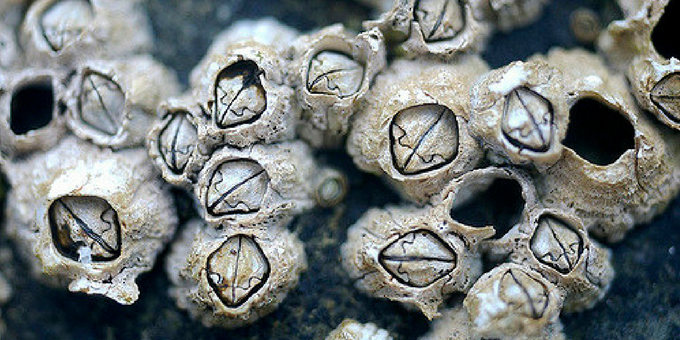3 Proactive Ways to Care for Your Boat During High Growth Season [TIPS]
- John Lawrence
- Jun 19, 2017
- 4 min read

The bang of July 4th fireworks announces more than just America’s independence. It’s also a loud reminder that in Florida we’re officially deep into barnacle High Growth Season. In fact, our waters significantly heat up between May and October.
While the year-round heat of our Florida water means that barnacle growth occurs in every season, the summer months particularly call for diligent boat care. Want to ensure that your boat bottom paint, antifouling agents and running gear function at optimal levels? Know the factors that most contribute to barnacle growth, plus our three recommended tips to ramp up your boat’s care during high growth season.
Environmental Factors that Contribute to Barnacle Growth
According to WorldSeaTemperature.org (an organization that calculates average temperatures based on several years of collected data) the average water temperature in West Palm Beach in July is 84.4 degrees Fahrenheit. That’s 10.2 degrees higher than the average January number. These pictures from the Barefoot Barnacle Cleaning archives show the enormous difference in growth that just 7 months and 10 degrees can make:
BOCA RATON -- January vs. August barnacle growth (rudder)
RIVIERA BEACH -- January vs. August barnacle growth (prop)
Water temperatures reach their peak in August (at 85.7 degrees Fahrenheit). Then, by November the numbers taper back down to the high 70s.
All of this warmth promotes a wonderful climate for barnacle growth. According to research published in the Journal of Thermal Biology changes in water temperature directly impact the respiration and feeding of barnacles. Hence, the summer months can see a significant increase in barnacle growth.
(Think you’re immune because your boat’s moored in a strong current? Think again. The study also revealed that barnacles exposed to faster water velocity and higher temperatures experienced significantly increased growth.)
Boat Bottom Factors that Contribute to Barnacle Growth
Generally, high growth months don’t necessitate increased cleanings for boats already on a consistently frequent bottom cleaning schedule. Sometimes, however, the following barnacle growth contributors create significant effects that require a temporary schedule change:
Paint condition – Bottom paint (which includes antifouling agents) helps reduce barnacle growth but doesn’t stop it altogether. Additionally, paint quickly wears off of metal hardware, including props, trim tabs, rudders, shafts and struts. Lastly, poor paint jobs result in flaking, peeling and increased wear that leaves boat bottoms excessively exposed. The less paint the more quickly and tenaciously barnacles attach and grow.
Location – You already know that the faster moving the water (current) the greater the barnacle growth. The same holds true for the cleanliness of the water: Boat’s docked in cleaner water (i.e. the intracoastal) generally experience increased growth versus those moored in, for example, canals.
Boat use – The frequency of your boat’s use can play a key role in containing barnacle growth. Less growth occurs in cases of more use. (This especially holds true in the presence of well-maintained bottom paint.)
Cleaning Frequency – Even newly painted boats require small cleaning turnaround time (i.e. the bottom should be checked one month after cleaning). The more barnacles attach – and the longer they are allowed to remain – the more destructive they can be at every stage of paint life. Ultimately, extensive growth reduces the amount of time that paint actually lasts.
3 Proactive High Growth Season Tips
Protecting your boat bottom, then, depends on being proactive about and engaged in maintaining your boat’s condition. To best care for your boat during these warmer months engage in these three actions:
1. Assess your bottom growth – There are easy ways to identify that your boat needs extra attention. Increased barnacle activity occurs below the waterline. (Don’t mistake waterline algae for real growth.) If you can see the following elements from shore (or take a quick dive below the boat) notice the growth on:
Trim tabs
Running gear
Lights
Rudder
2. Pay attention to performance – Too much barnacle growth can dramatically impact how your boat runs. Be on the lookout for:
Vibrations
Drag
Lowered fuel economy
When any of these elements occurs get your bottom cleaned sooner rather than allowing growth to continue building.
3. Use your boat more frequently – While increased use will not stop barnacle growth it goes a long way in reducing the amount of growth allowed to occur. Even just a once weekly ride can (especially for boats with ablative paint) significantly help maintain your usual time between cleanings.
Bonus Tip: Plan Your Trip
A few days ago we received (yet another) call from a boat owner lamenting his recent trip to the Bahamas. The calls always go something like this…
“We decided to go to the Bahamas on the spur of the moment. We knew the boat was due to be cleaned the next week but thought we’d have no problem making the trip. The boat’s performance was way off. We dove under the boat to take a look – sure enough, we should have had a cleaning before we left the slip!”
Planning to start your trip with a bottom cleaning can make all the difference in the quality of the ride and the efficiency of your boat. Even if you like to take spur-of-the-moment jaunts taking the time to have a quick cleaning can translate to significant savings at the fuel tank.
Getting ready for a boating vacation? Let us know! In most cases we can accommodate service within 24-hours of your request.










Comments